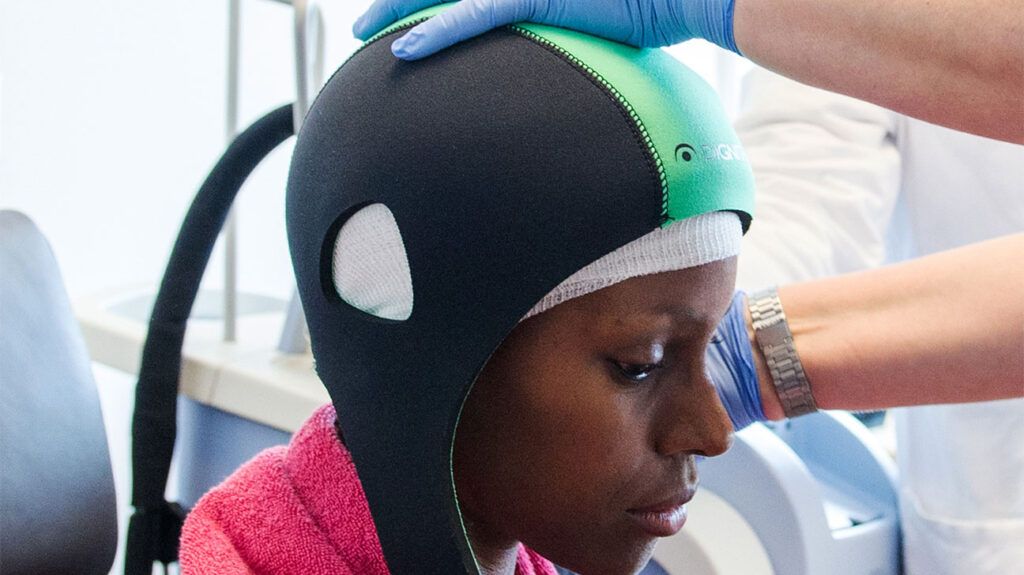Hodgkin’s lymphoma (HL) can sometimes result in hair loss, although this appears to be very rare. Chemotherapy and other treatments may also cause hair thinning and loss.
HL is a cancer of the lymphatic system. It causes a range of symptoms, including fatigue, fever, and unexplained weight loss.
Hair loss, or alopecia, can be a symptom too, but there is little scientific research on this.
This article looks at Hodgkin’s lymphoma and hair loss, including what the connection between them is, which treatments cause hair loss, and how people can manage it.

Hodgkin’s lymphoma (HL) may cause hair loss. However, there are only a few case reports in the scientific literature that describe this happening.
For example, a
The lack of evidence makes it challenging for researchers to determine how often it occurs. Additionally, it is important to keep in mind that hair loss can happen for many reasons, so a person who only has this symptom may not have HL.
Learn more about the causes of hair loss.
Some more
- swollen lymph nodes
- fever
- night sweats
- unexplained weight loss
- fatigue
- itchiness
If lymph nodes in the chest swell up, this could also result in chest pain or shortness of breath.
Yes, various types of HL treatment can cause hair loss.
If hair loss occurs, it usually starts
Hair loss may also affect the scalp, eyebrows, eyelashes, and other body hair. The loss is typically temporary, and hair begins to regrow once the person completes the course of treatment.
Radiation therapy is more localized in its effects, but it can lead to hair loss in the treated area. Hormonal or targeted therapies may also cause hair thinning or loss.
To manage hair loss due to HL, there are some
- Getting a haircut: Cutting hair shorter before starting treatment can make the eventual hair loss less dramatic and easier to manage.
- Exploring wig options: People who would like to wear a wig can look at their options before treatment begins, allowing for a more seamless transition.
- Scarves and head wraps: Others prefer to wear scarves and head wraps. It may help to look into different styles or to purchase some before treatment.
- Sleepwear: Soft sleep caps, wraps, or silk pillowcases can reduce friction on the hair during sleep, which may delay hair loss.
- Prevention strategies: There are some approaches that may reduce the risk of hair loss during HL treatment. A person can talk with their healthcare team about including these in their plan before chemotherapy begins.
That said, there is no medical need for a person to take any of these steps if they do not want to.
Preventing hair loss during HL treatment is challenging, but there are strategies that may minimize the impact:
- Cold cap therapy: Cooling caps are items people can wear during chemotherapy treatment to reduce the risk of hair loss. However, they
can have side effects, such as pain and headaches. A person can weigh up the benefits and risks with their team. - Scalp cooling systems: Modern scalp cooling devices offer a more controlled and consistent cooling process than caps. These systems are designed to maintain a specific temperature, providing a more effective means of reducing blood flow to the scalp during chemotherapy.
- Gentle hair care: A mild, sulfate-free shampoo and conditioner can help maintain hair health during treatment. Avoiding heat styling tools and opting for gentle detangling techniques can reduce stress on fragile hair.
- Nutritional support: Adequate nutrition is vital for overall health, including hair health. A balanced diet with sufficient protein, vitamins, and minerals may support hair strength and growth.
Caring for the scalp during and after hair loss is also important. Here are
- Mild cleansing: Use a gentle, fragrance-free shampoo and conditioner to cleanse the scalp gently. Avoid harsh chemicals that may irritate sensitive skin.
- Avoiding irritants: Steer clear of styling products containing alcohol, as they can be drying. Choose soft hair accessories and avoid tight hairstyles that may pull on the scalp.
- Sun protection: Protect the scalp from the sun by wearing a hat or using sunscreen of at least 30 SPF, especially if the hair loss is widespread.
- Moisturizing: For individuals with dry or sensitive skin, applying a hypoallergenic, fragrance-free moisturizer to the scalp can help alleviate discomfort.
Hair typically begins to grow back a few weeks to months after the completion of chemotherapy or radiation therapy. The exact timeline varies among individuals.
Initially, the regrowing hair may have a different texture or color than usual. A soft fuzz can develop 3–4 weeks after chemotherapy ends, but it should return to its pre-treatment state over the following 6 weeks.
Hair loss is a potential symptom of Hodgkin’s lymphoma but appears to be rare. However, a person may experience hair loss due to chemotherapy or radiation therapy for the condition.
Hair loss due to cancer treatment is usually temporary, and hair typically begins to regrow a few weeks to months after completion. Planning ahead for changes in appearance, new hair and scalp care routines, or choosing hair loss prevention methods may help a person cope.
